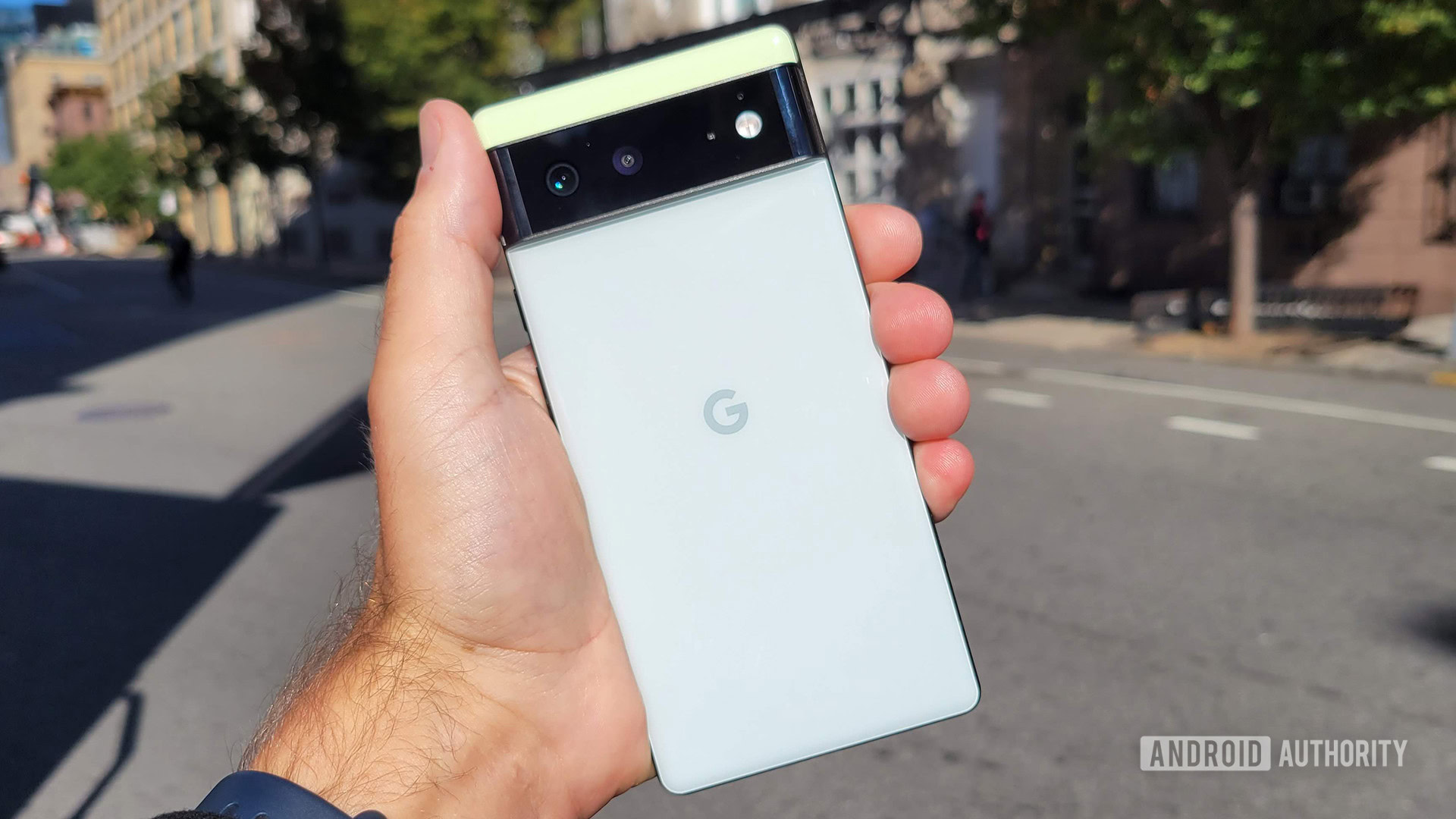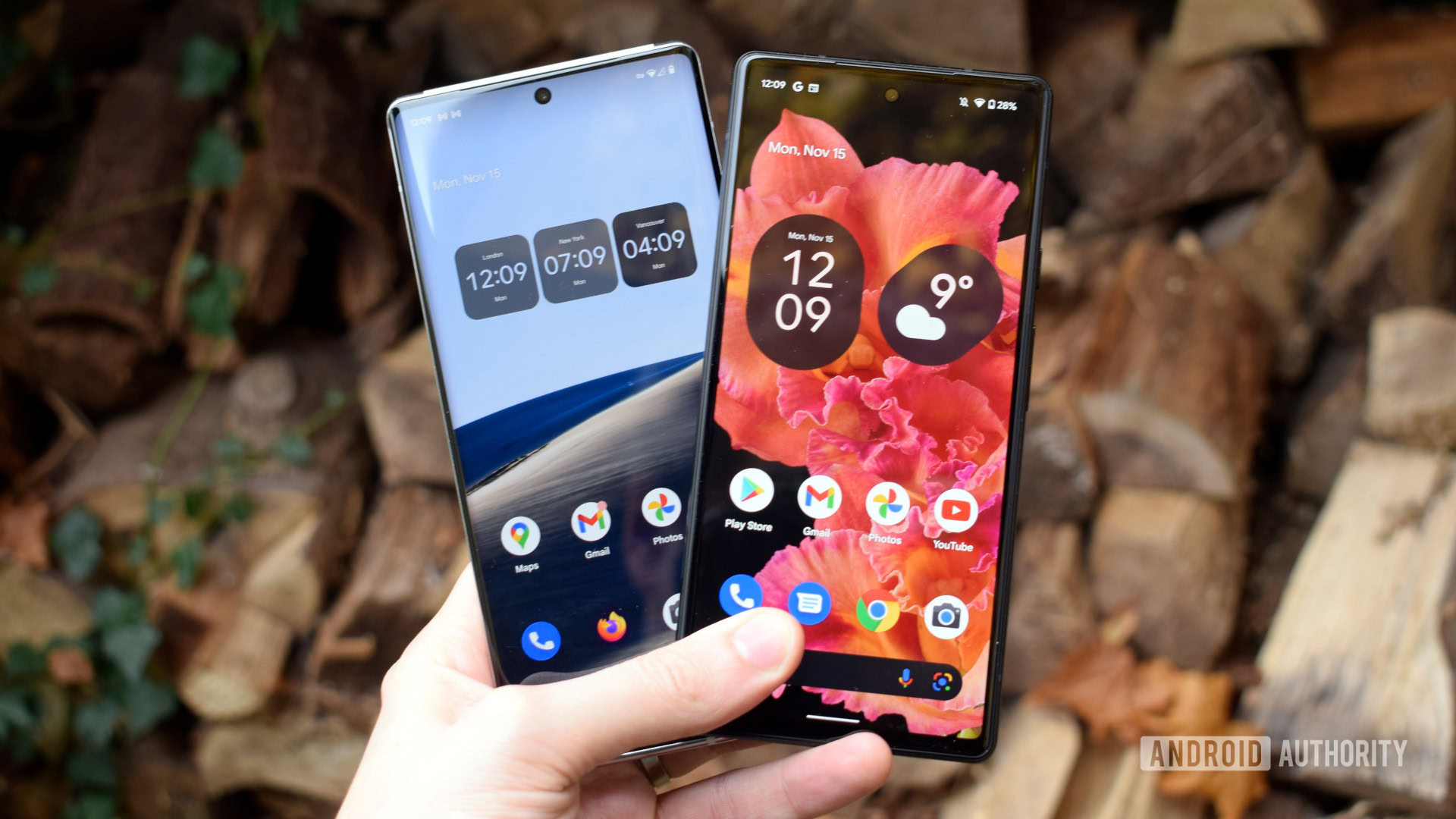Google and Samsung updates put the rest of the Android world to shame
Eric Zeman / Android Authority
On November 15, 2021, Samsung started rolling out the stable version of One UI 4, based on Android 12. That’s one of the fastest Samsung updates to a new Android version ever. It certainly beats last year’s rollout of Android 11 to the Galaxy S20 series, which started on December 2, 2020.
Eventually, One UI 4 will make its way to every major Samsung phone launched in 2021 and 2020, including Galaxy S, Galaxy Note, Galaxy A, and Galaxy Z phones. Tablets from those years will also see the update. By our estimates, that’s over 40 devices.
Meanwhile, the Google Pixel series got Android 12 on October 19. This was a bit later than expected, but still well ahead of pretty much everyone else.
See also: Everything you need to know about One UI
Unfortunately, most other Android OEMs struggle to even keep the basic two-year promise of Android upgrades. Even when they do keep that promise, the updates arrive incredibly late. Some big offenders recently for the Android 11 rollout are Asus (US version of 2020 ROG Phone 3 took over 10 months) and Motorola (2020 Edge flagship took 6 months). This is to say nothing about shipping monthly security patches, which can be a grab bag across manufacturers in terms of timeliness and cadence.
With Google’s recent extension of its update schedule and Samsung knocking it out of the park again and again, other Android OEMs should be on notice. If they aren’t, they’re going to get left behind.
Google and Samsung updates: Leaders of the pack

C. Scott Brown / Android Authority
If you’re knowledgeable about the update policies of the various Android OEMs, you’ll know that Google’s latest policy is three years of upgrades and five years of security patches. This means the 2021 flagship from the company — the Google Pixel 6 — will see Android 13 in 2022, Android 14 in 2023, and Android 15 in 2024. From late 2024 to the end of 2026, it will see security patches only, and then it will reach end of life status. Notably, this is only for the Pixel 6 series — most Pixel phones, including this year’s Pixel 5a, offer three years of upgrades and four years of security updates.
Samsung set its own latest policy in 2020. It offers three major Android upgrades and four years of security patches for the bulk of its lineup. That’s quite close to Google’s, though Samsung’s budget fare sometimes receives either quarterly or biannual security updates instead of monthly patches.
See also: Everything you need to know about Google hardware
In a sense, the two companies have been continually trying to one-up one another. For the Pixel 2 launch, Google increased its promise from two years of upgrades and three years of patches to three years of upgrades and three years of patches. In 2020, Samsung finally upped its own game to the aforementioned three upgrades/four years of patches. Now, with the Pixel 6 series, Google has added that extra year of patches. At this rate, it’s only a matter of time before one of them increases the upgrades to four years.
To be fair, other OEMs are also increasing their promises. OnePlus recently did so, setting a schedule that matches Samsung’s — but only for its flagships and premium mid-rangers. Oppo and Vivo made similar promises for their flagship Find X and X series phones, respectively. Xiaomi followed suit, but only for selected phones, starting with the Xiaomi 11T series.
In other words, Google and Samsung are leading the pack while other OEMs try to keep up, with varying degrees of success. Google and Samsung still have plenty of room for improvement, though.
Google should be a more definitive leader

Robert Triggs / Android Authority
Everyone knows Google owns Android. The company bought the operating system way back in 2005. Google launched the Pixel series 11 years later, and up until 2021, the company only ever committed to three Android upgrades and three years of security patches.
Considering the advantages Google has over Samsung — direct access to the OS it owns and a much, much smaller roster of phones to support — it’s quite sad Google isn’t way ahead of Samsung here. We’ve talked about this in the past. There doesn’t appear to be any outward reason why it can’t match Apple’s degree of support for the iPhone — especially now its core hardware is designed by Google.
Google should be setting the bar, not sitting neck-and-neck with Samsung.
To be fair to Google, it’s totally possible the company could get to a five/five promise somewhere down the line. Maybe the Pixel 7 will come with five years of upgrades and patches, and Google could then retroactively improve its commitment to the Pixel 6 series. It’s totally possible. It could also offer support parity between its “Pixel a” series and its flagships. As of right now, though, Google’s commitment is only impressive if you ignore how much better it could be.
It’s coming down to Samsung updates vs Google updates

C. Scott Brown / Android Authority
Despite our gripes with Google, it’s clear that other Android OEMs can’t hold a candle to the search giant and Samsung.
When it comes to Android support and speedy upgrades to new versions, it’s a two-horse race now. OnePlus — which used to be a leader for consistent long-term updates — doesn’t even have a date set for an Oxygen OS 12 rollout. Even then, it appears Oxygen OS 12 is going to be more like Color OS 12 than anything else. Speaking of which, Oppo is doing some great work with delivering Android upgrades quickly, but it still won’t commit to bringing three years of upgrades across its lineup. Xiaomi, Sony, Vivo, Realme, Asus, Motorola — they’re all failing to meet the bar Samsung and Google have set.
Continue reading: When is Android 12 coming to your phone?
Any Android OEM that isn’t hashing out how to keep up with Samsung and Google in this regard is only going to look worse over time. With LG out of the game as of this year and Huawei struggling just to stay afloat, the playing field is getting smaller. Google appears to have a hit on its hands with the well-received Pixel 6 series, and Samsung rarely loses much market share. Other OEMs offering update promises with multiple asterisks just isn’t going to cut it while more and more people are holding onto their phones for longer. Also, the argument that “only fanboys care about updates” isn’t going to hold as much weight if Samsung’s and Google’s marketing teams start using their update commitments as a sales tactic. And for those that don’t care about security updates in particular, well… you should.
The bottom line here is that if Android updates are important to you, a Samsung or Google phone is what you’re stuck with for now. If other companies want you to give them a shot, they’re going to need to match Samsung and Google. I guarantee any that don’t will regret it later.
For all the latest Technology News Click Here
For the latest news and updates, follow us on Google News.
